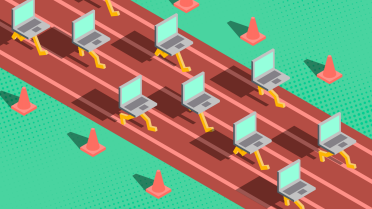.NET desktop development and struggle of choice
Have you ever thought that behind most applications on Windows common Microsoft desktop development technologies used for developing them? Learn more about it in this article!



The idea of SEBx was first formed in 2017, with the aim of exploring new technologies and business models as an independent innovation studio within SEB Group. Though the idea remains, some changes have been made in connection to one of SEBx's initial projects recently developing into a separate business unit - SEB Embedded. What does this change actually mean for the future of SEBx?
If you ask me, I believe that the work we do within SEBx still plays a key role in driving innovation and future-proofing technical capabilities. As SEB continues to accelerate its digital journey, it is more important than ever that we try to keep up with our surroundings by identifying emerging trends - both within research, startups, fintech and big tech. Here, SEBx works as a great platform that enables us to collaborate and exchange ideas in an open environment. We work outside conventional structures and legacy processes, but with full access to everything the bank has to offer.
Within this framework, the previous Head of SEBx, Christoffer Malmer, was able to develop SEB Embedded - a new banking platform based on the Banking-as-a-Service (BaaS) concept. As BaaS has a great product-market fit, it made sense for Christoffer to solely focus on SEB Embedded. This, however, decreased the opportunity for experimental banking within SEBx, which requires a different type of mindset, different people and a different type of organisation. As we wanted to get back to the initial idea of SEBx, we began asking the same questions that we did in 2017: What future trends can we identify? And how do these trends affect banking?
These topics have always intrigued me. So, when I was given the opportunity to take on the role of Head of SEBx after the decision was made to make SEB Embedded its own business unit, it felt like a natural step. Though we have had the opportunity to reshape SEBx in this new 2.0 version, the overall mission is still to explore new technology and new business models with a focus on identifying potential development initiatives. The work is broad and involves continuous contact with researchers, tech companies, customers, and internal stakeholders.
The first major task within SEBx 2.0 was to scan the market to examine what is currently happening. During the first three months, we asked ourselves how we could get hold of new ideas and better understand emerging trends. Thinking along those lines while having a constant dialogue with other companies as well as the academic world has been very fun. One of the most interesting findings during this initial stage was comparing this first scan to the one we did in 2017. For example, most people in 2017 thought that it would take another 20 years to see real change in AI development. Today, we know that isn’t true.
So, we can see that our society is changing rapidly, not only when it comes to technology initiatives. We also see an increase in demand for sustainability work, a topic that I believe will become an obvious and integrated part of everything we do. This includes both social, environmental and economic issues. There is definitely a wide assortment of ideas to explore here. They could, for example, include areas such as cyber security, AI, Internet-of-things and other topics that are of high relevance from a banking perspective. As such, finding an obvious direction regarding what type of initiatives and ideas to focus on will be somewhat of a challenge. But I believe that makes the task a lot more interesting and exciting.
To be innovative and find new areas to explore, we need people with different mindsets. Therefore, I believe that people are the most important factor for SEBx’s success, as well as SEB as a whole. We’re always on the lookout for innovative minds and have a current team that is very diverse. This diversity should always be a natural part of what we do as it helps us see things from different perspectives. For example, I myself come from a non-Swedish background, which I believe is of advantage when it comes to thinking outside the box. In Sweden, we tend to look at what countries such as England or the US are doing, often forgetting to look for inspiration from other parts of the world. Having that global and international background helps give a slightly different, but important, view. In that way, our diversity gives us a long-term perspective on current trends and insight into which initiatives are a bit more edgy. As such, the human dimension is very important in what we do.
Based on the initial scan we have tried to find ideas that fall between doing good, doing something meaningful and doing something that makes money. Though we’re constantly exploring new areas, we currently have three ongoing projects - one of which is within AI. In the future, we hope that at least one, but hopefully all, will become great initiatives that we either donate back to the bank, implement into the bank, or can create a separate business out of. This is work that drives me, and something I am very much looking forward to. And hopefully, that will lead us to discovering the next big thing within the financial industry.
Have you ever thought that behind most applications on Windows common Microsoft desktop development technologies used for developing them? Learn more about it in this article!

At SEB, we began using hackathons as a method for innovation and learning as early as 2015. Since then, we have successfully hosted seven global hackathons, a dozen innovation days and other themed sessions to dream and explore together.

Dashboards have been a great way of providing an overview of one’s financials. But will it be good enough in a few years?

Do you have feedback or thoughts about future blog articles? Get in contact with us at the e-mail address below.